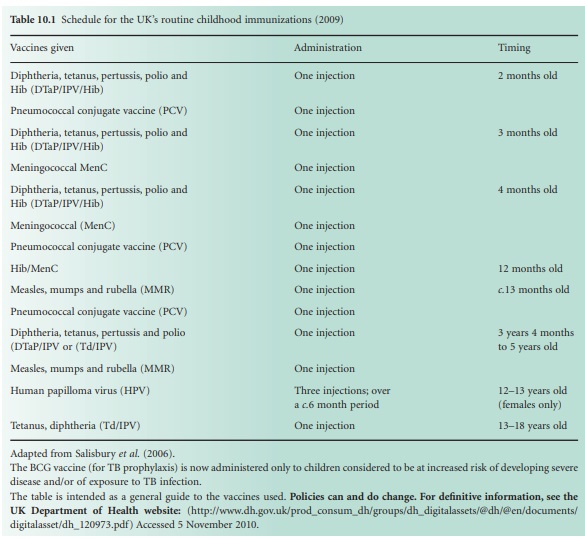The UK Routine Childhood Immunization Programme
| Home | | Pharmaceutical Microbiology | | Pharmaceutical Microbiology |Chapter: Pharmaceutical Microbiology : Vaccination And Immunization
The timing of the various components of the childhood vaccination programme is subject to continual review.
THE UK ROUTINE CHILDHOOD IMMUNIZATION PROGRAMME
The timing of the various components of
the childhood vaccination programme is subject to continual review. In the
1960s, the primary course of DTP vaccination consisted of three doses given at
3, 6 and 12 months of age, together with OPV. This separation gave adequate
time for the levels of induced antibody to decline between successive doses of
the vaccines. Current recommendations (Table 10.1)
accelerate the vaccination programme with no reductions in its efficacy. Thus,
the MMR vaccination has replaced separate measles and rubella prophylaxis and
BCG vaccination may now be given at birth, but only for infants living in areas
of the UK where the annual incidence of TB is 40 per 100 000 or greater and
those with familial or other links to high-risk countries. DTaP vaccination
occurs at 2, 3 and 4 months to coincide with administration of Hib and IPV. It
is imperative that as many individuals as possible benefit from the vaccination
programme. Fewer visits to the doctor’s surgery translate into improved patient
compliance and less like-lihood of epidemic spread of the diseases in question.
The current recommendations minimize the number of separate visits to the
clinic while attempting to maximize the protection generated.

Related Topics
